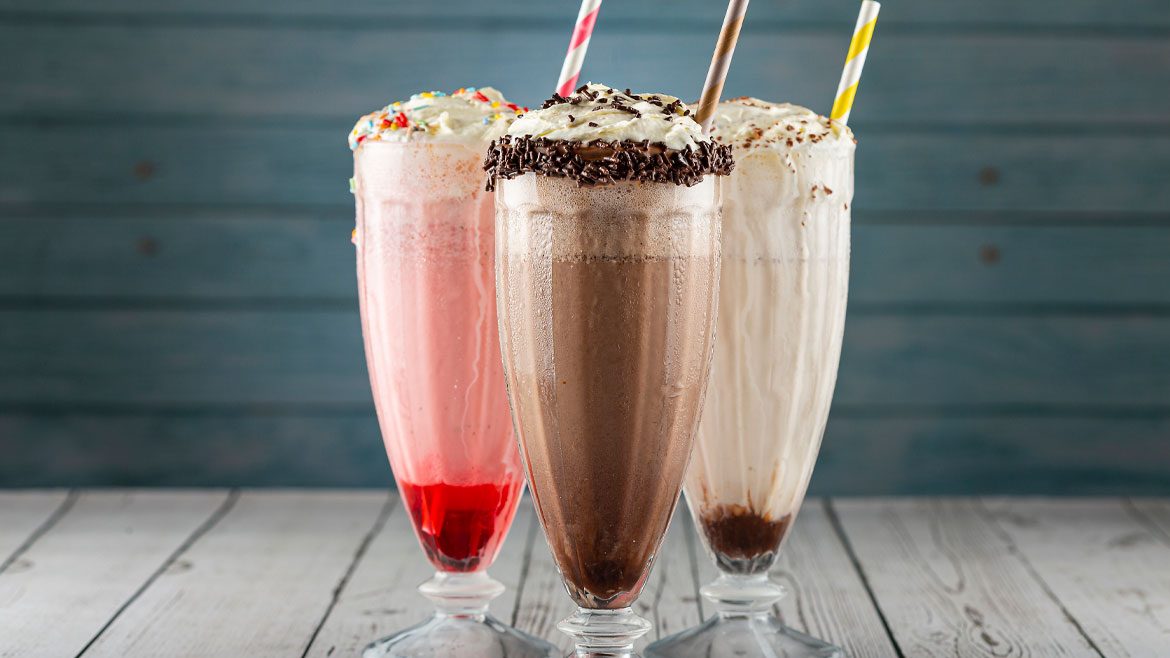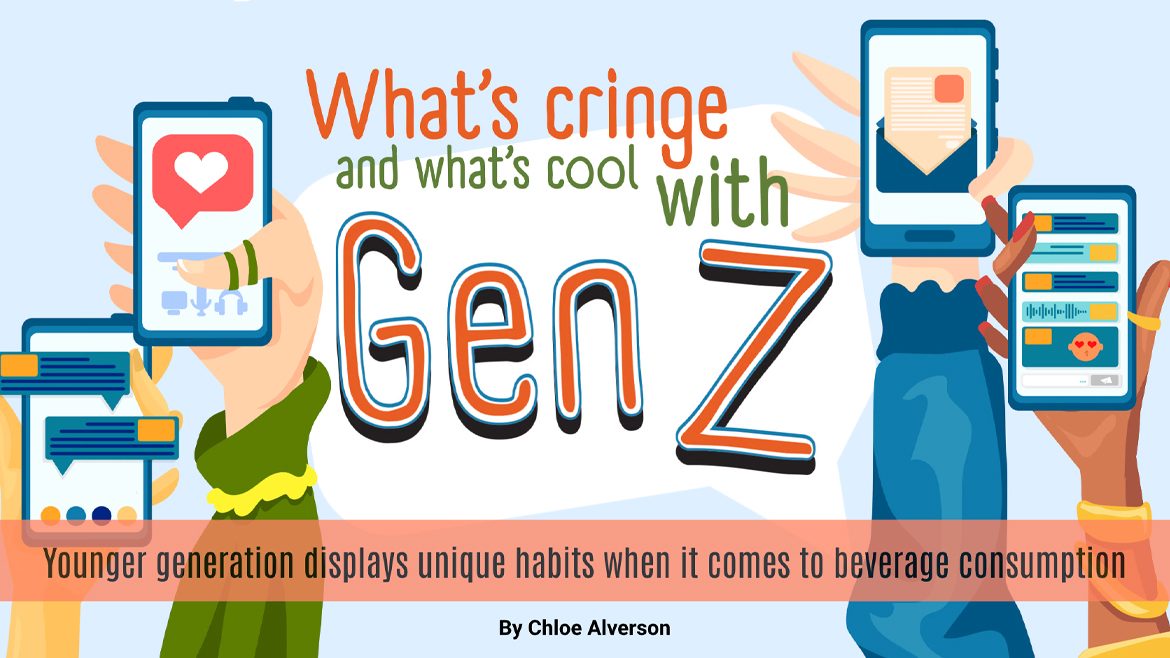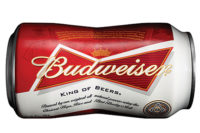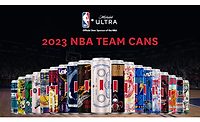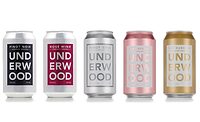Can Beer Recapture its Edge?
Can Beer Recapture its Edge?
The state of the beer industry in 2005 might depend on whether you’re the kind of person who likes to hear the good news or bad news first. But both optimists and pessimists would agree that brewers in the United States are facing a marketplace that is very different than it was even a few years ago.
According to Euromonitor International, U.S. brewer
volumes were essentially flat last year, with a decline from 23.892 billion
liters in 2003 to 23.888 billion in 2004. More segment-specific figures
include those from the Brewers Association, based on data from the U.S.
Department of Commerce, which reports that “mass market” beers
grew 0.5 percent in volume in 2004, while pricier imports and craft beers
gained 1.4 percent and 7 percent, respectively.
Retail trends through April this year are up 1 percent
overall, with 4.3 percent dollar growth for “high-end” beers,
including imports and craft beers; 2.3 percent growth for premiums; a 10.7
percent dollar decline for domestic specialties; and 1.1 percent drop for
sub-premiums, according to Information Resources Inc.
But the measurement that has piqued industry
watchers’ interest is beer’s share of the total alcohol
beverage market, which has been challenged by wine and spirits. IRI
estimates that beer lost a full point of its market share in grocery and
drug channels last year, with wine picking up 80 percent and spirits 20
percent of that loss. Overall, U.S. spirits volume increased 3.1 percent in
2004, while wine volume grew 2.7 percent, according to the Commerce
Department.
“This isn’t something that’s
happened overnight,” says David “Bump” Williams,
executive vice president, general manager of the beer, wine and spirits
division at IRI. “For the past three or four years, we’ve seen
a slowing down of beer category growth and there are a lot of reasons for
that.
“We’ve been talking to our clients in the
beer industry and saying, ‘You guys had better be advised that the
people in Milwaukee or in St. Louis or out in Golden, Colo., aren’t
your only enemy. What you need to watch out for are the wine and spirits
[companies].”
Demographics are on the side of all alcohol companies,
with a wave of new legal drinking age consumers expected to come of age
during the next decade. But today’s youth have been trained on sweet
beverages and likely will carry that preference into adulthood, Williams
says.
“They may try a beer,” he says. “But
a beer’s taste profile is very hoppy, very bitter, and that’s
something that a lot of new legal drinking age consumers are not accustomed
to.”
Brewers are trying to combat this trend with new
products such as Anheuser-Busch’s BE, a sweeter, caffeine-enhanced product designed to appeal to
new flavor preferences and combat the Red Bull cocktail phenomenon. Molson
Coors has followed with Molson Kick, a guarana-enhanced beer, initially
only available in Canada.
FMBs backfire
Flavored malt beverages (FMBs) such as Smirnoff Ice
and Bacardi Silver may seem like the perfect solution to nabbing new
consumers with a sweet tooth, but they appear to have helped the beer
category only temporarily while giving spirits
the real advantage.
“New consumers came into the malt-based category
because of these flavored drinks,” Williams says. But, he says, they
were not loyal and bounced from flavor to flavor, and eventually to the
spirits brands for which the FMBs were named.
“They want to be unique, they want to stand out
in a crowd,” he says. “So they’ll have their bottle of
Smirnoff Ice or Bacardi Silver, and they’ll get tired of it and say,
‘I like Smirnoff Ice; I’m going to have a flavored
martini.’”
Add to that a newly awakened health-consciousness
among older, more traditional beer drinkers, and the influence of
“Sex and the City” on America’s cocktail culture, and you
have several more reasons consumers have branched out into new beverage
categories.
“Young consumers find the [wine and spirits]
brands to be fun and interesting, romantic, sexy and stylish,” says
Tom Pirko, president of Bevmark LLC. “There are many interesting
brands that have deeply penetrated consciousness and their awareness is
very high on spirits. And wine is growing for all kinds of other reasons as
well.”
But Pirko argues that competition isn’t the only
reason beer’s share is threatened. “Even if the wine and
spirits industry didn’t exist, you’d be seeing a decline in the
beer business because of the problems that are inherent in beer,” he
says.
Among those problems are price discounting practices
and similar product profiles that have turned domestic beers into commodity
products. “For some years now, we’ve been watching Bud, Miller
and Coors products all being sold for the same price,” Pirko says.
“When you reach a point where all the products are the same price and
they taste the same, and you can’t tell the ads apart, you have a
major identity crisis.”
| Top 10 Beer Brands, Retail Sales | ||||
| Food, Drug, Mass Merchandise* | ||||
| BRAND | Dollar sales | % change vs.prior year | Case sales | % change vs.prior year |
| Bud Light | $1,347,562,752 | 3.0% | 82,441,888 | 1.3% |
| Budweiser | $857,706,176 | -6.8% | 52,496,764 | -8.6% |
| Miller Lite | $699,448,704 | 9.8% | 44,102,680 | 6.4% |
| Coors Light | $492,829,824 | 2.6% | 31,108,580 | 0.7% |
| Corona Extra | $417,709,760 | -0.4% | 15,936,937 | -6.7% |
| Natural Light | $289,436,704 | -1.1% | 24,130,334 | -3.1% |
| Heineken | $259,906,144 | 2.7% | 9,903,418 | 0.9% |
| Michelob Ultra Light | $256,114,832 | 2.5% | 12,877,689 | -0.1% |
| Busch Light | $197,671,168 | 0.8% | 15,841,696 | -0.3% |
| Miller Genuine Draft | $197,447,536 | -4.9% | 12,320,990 | -8.3% |
| *Excluding Wal-Mart | ||||
| Convenience stores | ||||
| Bud Light | $3,063,013,120 | 17.7% | 165,633,584 | 15.0% |
| Budweiser | $1,946,556,160 | 6.2% | 106,043,616 | 4.0% |
| Miller Lite | $855,078,080 | 15.7% | 48,365,272 | 13.2% |
| Coors Light | $628,982,336 | 9.9% | 35,023,040 | 8.1% |
| Natural Light | $596,587,712 | 5.5% | 44,553,992 | 3.6% |
| Busch | $516,765,440 | 5.3% | 37,825,964 | 4.2% |
| Corona Extra | $429,959,872 | 11.1% | 14,683,845 | 6.7% |
| Busch Light | $335,773,440 | 4.4% | 24,818,972 | 3.9% |
| Heineken | $293,706,752 | 16.5% | 9,873,007 | 13.4% |
| Keystone Light | $291,519,136 | 9.5% | 19,374,196 | 8.7% |
| Source: Information Resources Inc. for the 52 weeks ending April 17, 2005 | ||||
According to IRI’s Williams, the deep
discounting practices among the major brands is “a very dangerous
tactic… How are you going to rebuild that brand equity and brand
value again when all these years you’ve been talking about the
quality and now it’s getting deep discounted?” he says.
On the high end
So where does that leave the beer optimist? Well,
imports and craft beers have been growing and they have largely been spared
the retail discounting practices of the more mass market brands, Williams
says.
“I don’t see craft beers getting promoted
or discounted all that much. Yet craft continues to grow,” he says.
“I don’t see imports getting discounted, and imports continue
to grow. So people don’t mind paying a premium price.”
Mexican and European imports lead the import beer
segment, with 46 percent and 38.4 percent of the category, respectively.
And Mexican imports grew 2.2 percent last year in dollar sales, while
European brews gained 5.1 percent, according to IRI. Canadian and
Australian imports both lost sales — 2 percent and 9.8 percent,
respectively.
Latin American brands start from a small base of 1
percent, but enjoyed a 17.5 percent sales increase in 2004, and the
category of “all other imports” jumped almost 24 percent.
“If I take out the big three brewers, I have
positive growth in the category on a dollar and case basis,” Williams
says. “People are not walking away from imports, they are not walking
away from craft beers. FMBs have had a resurgence because of new flavors
and variety packs and increased merchandising support. So people are buying
these super-premium-priced beers.”
Another bright spot for beer is light products. Six of
the top 10 beers sold at retail are light beers. The No. 1 beer in America,
Bud Light, grew 3 percent in dollar sales through food, drug and mass
merchandise channels for the year ending April 17, 2005, and almost 18
percent in convenience stores, according to IRI. Miller Lite increased 9.8
percent in food, drug and mass outlets, and 15.7 percent in convenience
stores.
The full-calorie counterparts did not fare as well.
Budweiser dropped 6.8 percent in food, drug and mass merchandise, and
Miller Genuine Draft lost 4.9 percent of sales in those channels. MGD lost
another 4.3 percent in the convenience segment, but Budweiser managed a 6.2
percent increase.
Despite sales increases for some of those top brands,
beer continues to lose valuable shelf space, says IRI’s Williams.
“One of retailers’ biggest concerns is not
just profitability or margin, but what they call ‘preventing
leakage,’” he explains. “If you always shop at my store,
I want to keep you coming back to my store. One of the things I use as a
draw card is new products — if you want to see all the new stuff
that’s out there, you come to my store.
“There is fixed shelving so I can’t just
extend the walls of my store to add new footing,” he continues.
“What happened is a lot of fast-turning categories got cut back a
little bit and beer is one of them. Beer lost shelf space last
year.”
One of the keys to fixing the retail problem, he says,
is to fill distribution voids, including out of stocks, which occur more
often when shelf space is eliminated, and are 3 to 5 percent higher for
beer than other categories.
It also is crucial to keep shelf space in convenience
stores, which are beer’s strongest outlets with 10 percent growth,
but are nonetheless hinting at cutbacks, says Williams.
The retail issues make the on-premise market an
important target. According to Euromonitor, the retail trade will account
for more than $39 billion in sales this year, while on-premise sales will
hit $37.6 billion.
“On-premise is the single biggest opportunity
for the beer category,” Williams says. “For years, the spirits
and wine companies have dominated that on-premise environment. It’s a
target-rich environment and the beer companies have let that slip through
their fingers a little bit.”
New packaging such as aluminum bottles are helping
brewers bring excitement to bars and restaurants. Budweiser Select and
Molson Kick’s new aluminum bottles both are offered exclusively in
on-premise locations.
| Top 10 Brewers, Retail Sales | ||||
| Food, Drug, Mass Merchandise* | ||||
| Company | Dollar sales | % change vs.prior year | Case sales | % change vs.prior year |
| Anheuser-Busch | $3,571,753,728 | -1.7% | 228,305,488 | -3.4% |
| Miller Brewing Co. | $1,590,883,584 | 0.1% | 111,284,088 | -2.4% |
| Molson Coors | $899,455,040 | 1.7% | 57,026,816 | -1.1% |
| Grupo Modelo | $601,212,672 | 2.7% | 23,091,418 | -3.6% |
| Heineken USA | $432,726,272 | 3.3% | 18,122,570 | 1.0% |
| Diageo Guinness USA | $261,673,968 | 17.5% | 9,108,441 | 16.6% |
| InBev USA | $255,581,440 | 4.7% | 12,495,400 | 2.6% |
| Pabst Brewing Co. | $222,857,712 | -5.2% | 20,085,816 | -7.1% |
| Boston Beer Co. | $96,070,848 | 7.6% | 3,790,209 | 7.2% |
| Mark Anthony Brands | $91,334,632 | 12.5% | 3,174,604 | 10.4% |
| FDM total | $8,610,417,664 | 1.0% | 512,039,616 | -1.8% |
| *Excluding Wal-Mart | ||||
| Convenience stores | ||||
| Company | Dollar sales | % change vs.prior year | Case sales | % change vs.prior year |
| ANHEUSER-Busch | $7,409,629,696 | 10.5% | 431,145,536 | 7.9% |
| Miller Brewing Co. | $2,033,590,272 | 6.6% | 131,739,608 | 5.1% |
| Molson Coors | $1,089,137,792 | 8.1% | 63,085,488 | 6.3% |
| Grupo Modelo | $531,760,288 | 15.8% | 18,637,592 | 12.1% |
| Heineken USA | $379,239,104 | 15.8% | 13,704,790 | 13.2% |
| Pabst Brewing Co. | $283,606,848 | 1.7% | 22,031,170 | -0.7% |
| Diageo Guinness USA | $271,863,872 | 26.1% | 8,920,708 | 25.1% |
| InBev USA | $151,032,480 | 4.4% | 7,203,292 | -1.4% |
| Steel Brewing Co. | $81,341,464 | 53.5% | 5,486,665 | 53.3% |
| Mark Anthony Brands | $66,359,320 | -9.3% | 2,164,605 | -14.3% |
| Convenience total | $12,570,612,736 | 10.2% | 715,190,976 | 7.4% |
| Source: Information Resources Inc. for the 52 weeks ending April 17, 2005 | ||||
Bevmark’s Pirko feels innovations in the beer
industry have been slow to arrive, but he points to Anheuser-Busch’s
Michelob Ultra, with its active lifestyle imagery, and Budweiser
Select’s “clean finish” flavor profile as two product
concepts that have broken new ground.
“We were really happy with Ultra because not only did it bring more women in, but it stole
the images of the sports drink market and Nike, and really looked at a way
to go one more step into the light category,” he says.
| Total U.S. Beer Sales by Variety | ||||
| |
(Total volume, millions of liters) | (Total value,U.S. $ millions) | ||
| Variety | 2004 | 2005* | 2004 | 2005* |
| Lager | 23,175.70 | 22,979.50 | ||
| -Premium lager | 4,413.50 | 4,610.70 | 20,339.00 | 22,966.90 |
| -Imported premium lager | 2,924.40 | 3,146.60 | 14,400.10 | 16,473.70 |
| -Domestic premium lager | 1,489.20 | 1,464.10 | 5,938.90 | 6,493.20 |
| -Standard lager | 13,912.70 | 13,662.50 | 39,088.50 | 40,729.90 |
| -Domestic standard lager | 13,912.70 | 13,662.50 | 39,088.50 | 40,729.90 |
| -Economy lager | 4,849.50 | 4,706.20 | 11,740.30 | 12,038.30 |
| -Domestic economy lager | 4,849.50 | 4,706.20 | 11,740.30 | 12,038.30 |
| Dark beer | 470.3 | 488.8 | 2,281.10 | 2,472.40 |
| Stout | 112.2 | 115.9 | 606.0 | 664.4 |
| Non-/low-alcohol | 129.7 | 122.8 | 251.5 | 237.1 |
| Total beer | 23,888.00 | 23,707.00 | 74,306.40 | 79,109.00 |
| * Projected | ||||
| Source: Euromonitor International, Chicago — Global Alcoholic Drinks IMIS, 2005. euromonitor.com | ||||
“I don’t think there is any doubt that
markets are cyclical and beer is in hard times,” he comments.
“But that doesn’t mean there aren’t still good
opportunities and that beer won’t have a resurgence. Part of that
depends on companies coming up with new products, new images for their
products and getting away from this sort of commodity approach.” BI
Looking for a reprint of this article?
From high-res PDFs to custom plaques, order your copy today!
